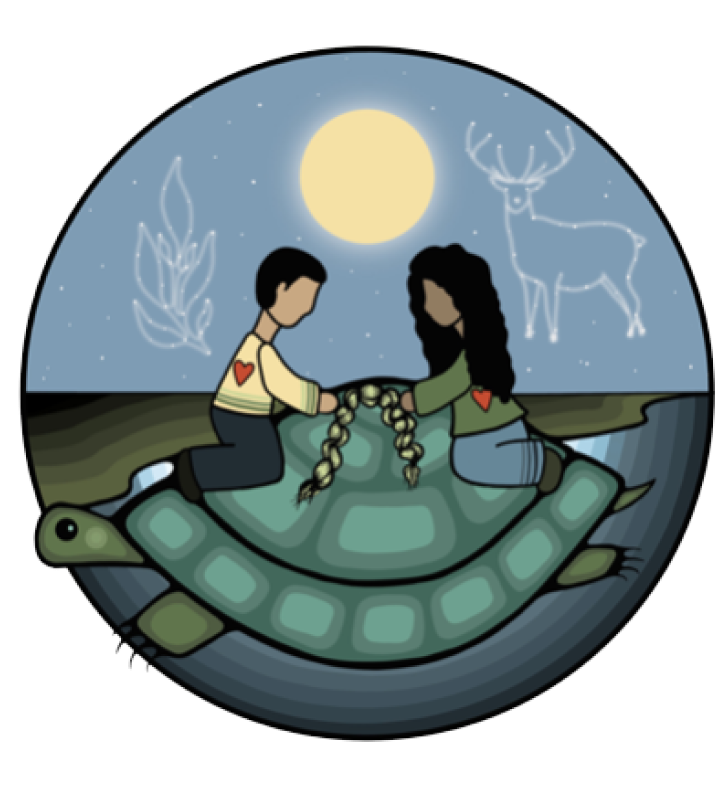Weaving Ways of Knowing
Treaties and Creation Stories as Models for Co-existence
Treaties and Creation Stories as Models for Co-existence:
Models for cross-cultural collaboration and co-existence are not new to Indigenous Peoples whose diverse cultures have existed peacefully on the land for millennia, guided by creation stories, teachings, and the creation of peace and friendship treaty agreements.
One example is Gdoo-naaganinaa, the Anishinaabeg term for the Dish with One Spoon treaty, formed between the Haudenosaunee and Anishinaabe peoples in 1701, but has been a concept guiding co-existence among Indigenous nations long before that time. It teaches that the gifts of the earth are all in one bowl, all to be shared from a single spoon; this suggests that the land is commonly held by all, provides a basis of mutual respect and responsibility, and plans for abundance so that all living beings can flourish from the same dish.
One of the treaties guiding cross-cultural collaboration is the Gaswenta, or Two Row Wampum. Gaswenta is a treaty formed between the Haudenosaunee and Dutch settlers in about 1613. The wampum belt depicts a canoe containing all indigenous cultural ways of living going down a river parallel to a ship which contains the European ways of living. Both vessels must travel the river of life together, but they don’t interfere with each other or try to steer each other’s boats.
The Three Sisters (corn, beans, and squash) is an ancestral Indigenous agricultural practice that provides a metaphor for bringing complimentary knowledge systems together. The corn, which can be considered Indigenous Knowledge, is a physical and spiritual framework that can guide the curious beans of Western science, which twine – like a double helix – around the scaffolding of the corn. The squash represents a protective habitat for co-existence and growth. As opposed to a “monoculture of science”, this metaphor highlights the benefits of bringing complementary knowledges together so “all may be fed” (Kimmerer 2015).
Lunch and Learn: Dish with One Spoon Wampum with Rick Hill Sr.
Video: Lunch and Learn: Dish with One Spoon Wampum with Rick Hill Sr.
Conversations in Cultural Fluency #5: Treaty Relations and Two Row Companion
Video: Conversations in Cultural Fluency #5: Treaty Relations and Two Row Companion
Enabling hybrid space: epistemological diversity in socio-ecological problem-solving
Barrett, M. J. (2013). Enabling hybrid space: epistemological diversity in socio-ecological problem-solving. Policy Sciences, 46(2), 180. http://www.jstor.org/stable/42636468




